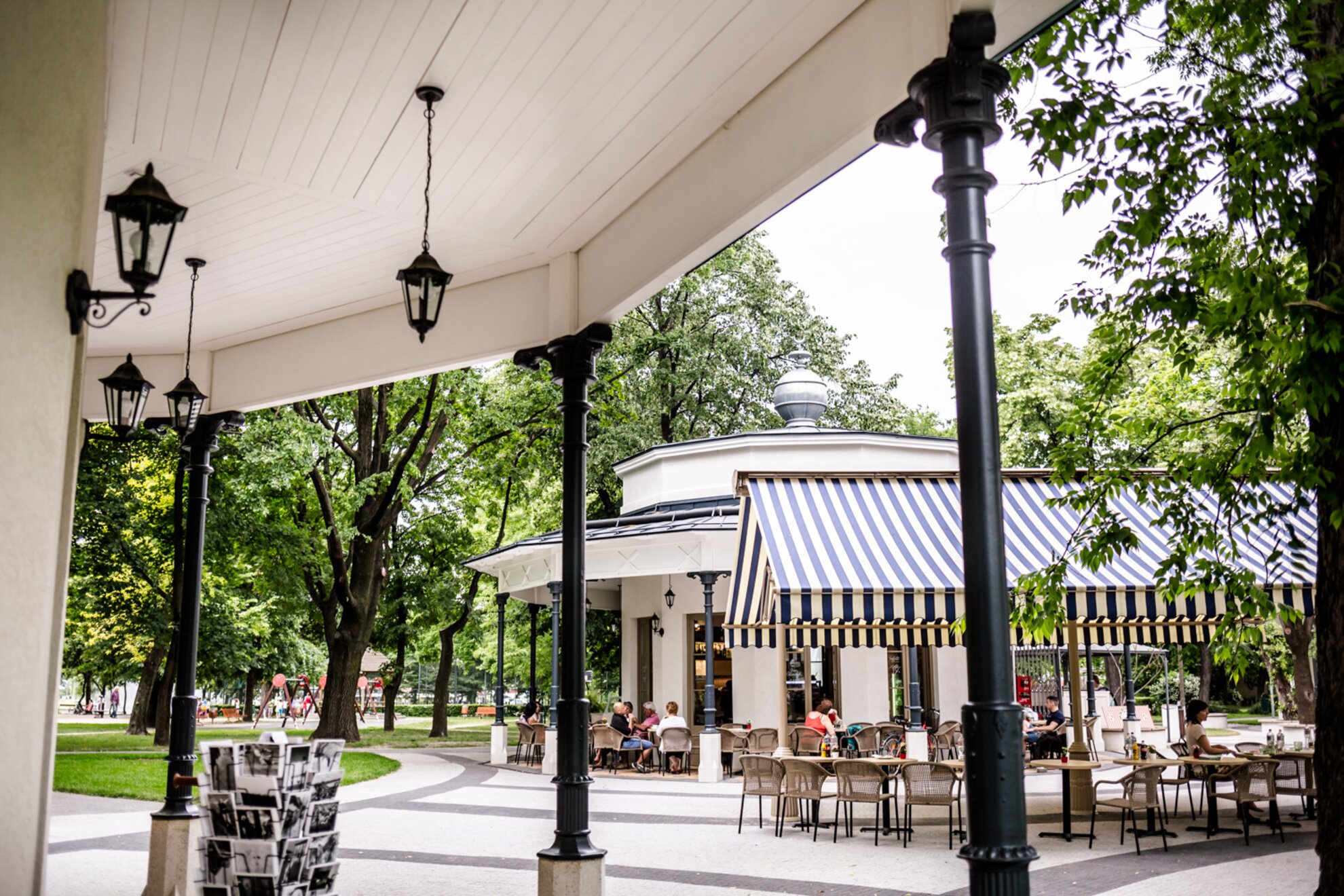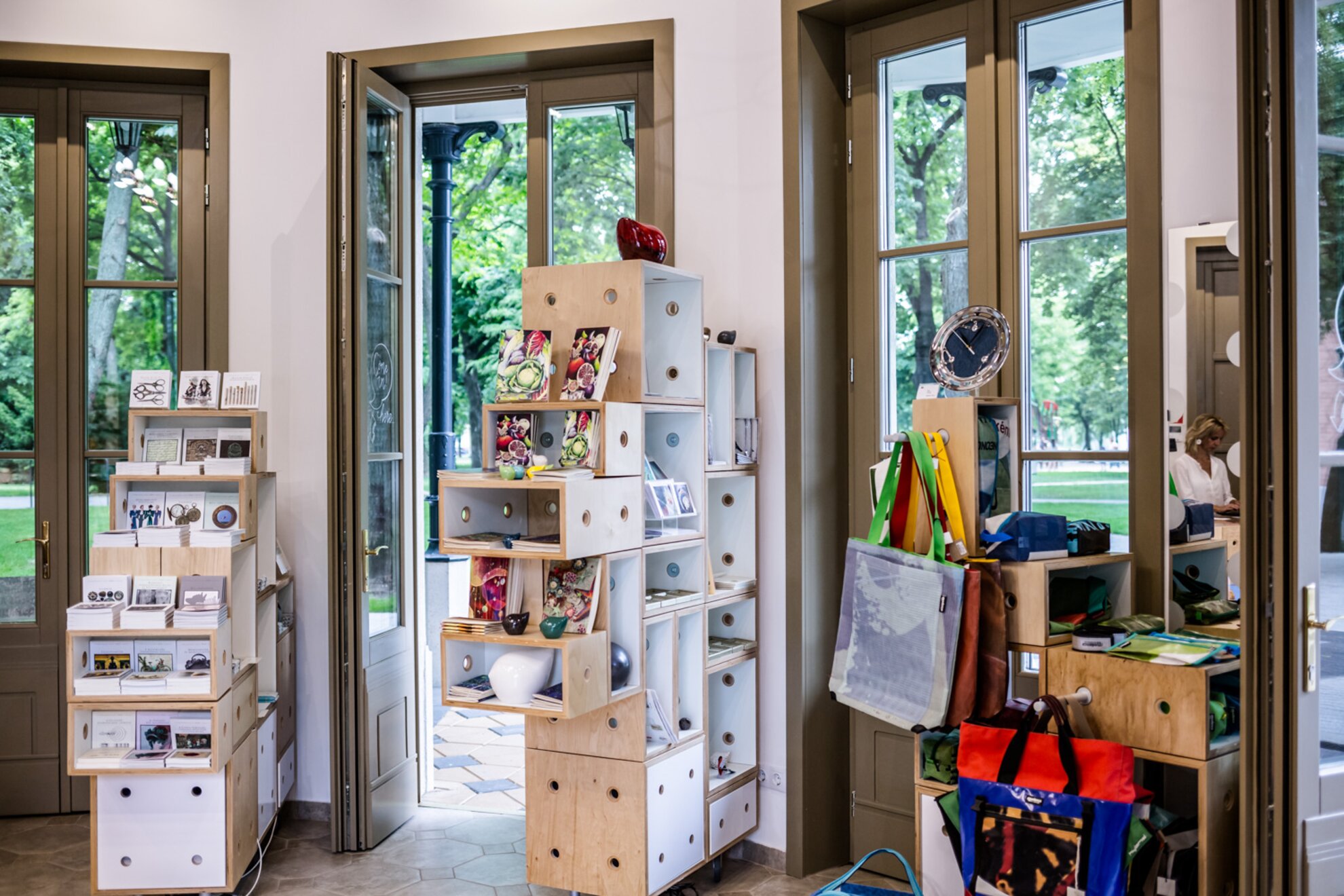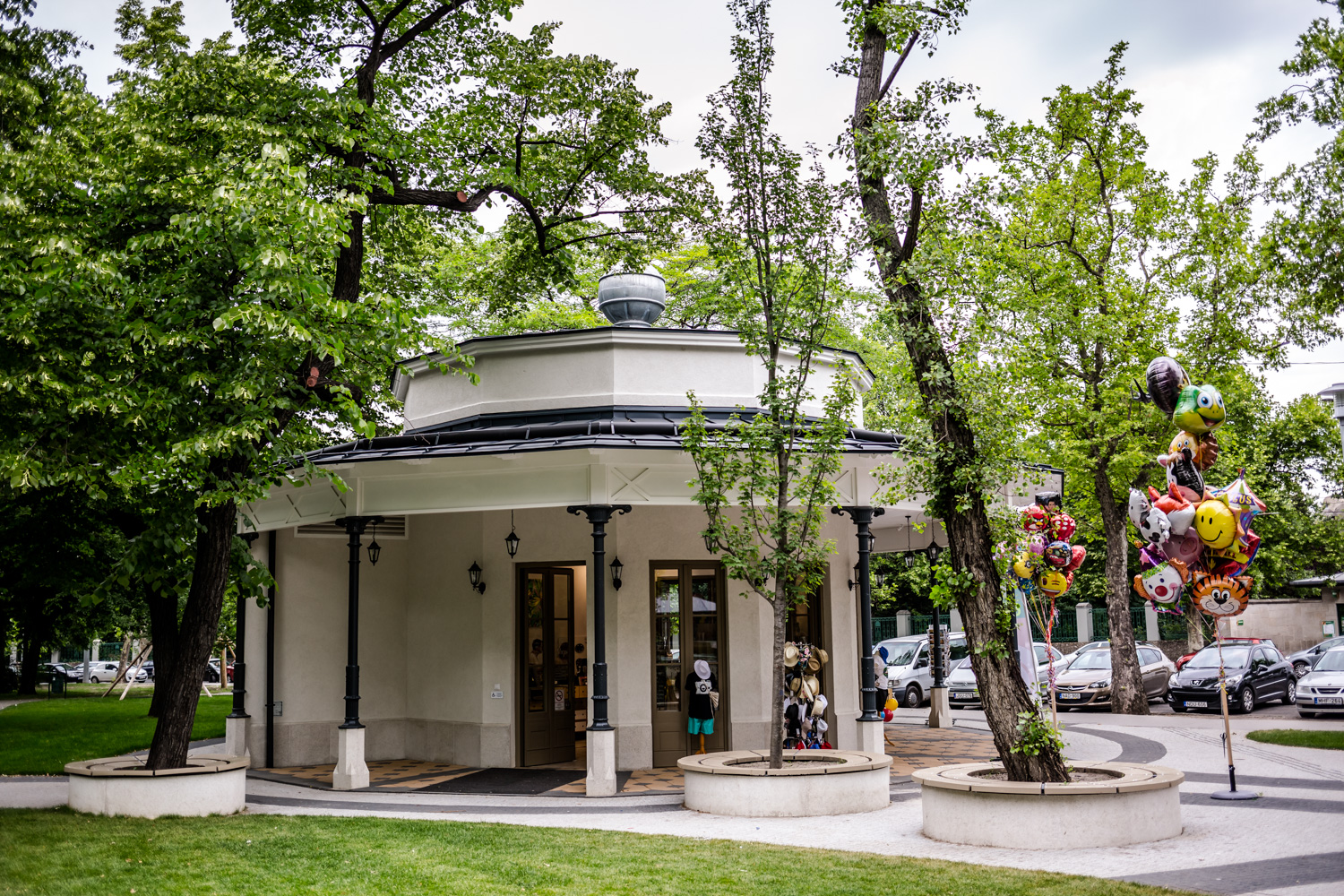Chief archivist Violetta Hídvégi found two watercolor paintings of Frigyes Feszl 17 years ago in an adventurous way: while collecting background material for a summary about pavilions in the 1860s in a dimly lit warehouse of the Budapest City Archives. The plans of one of the most famous masters of Hungarian Romantic architecture were realized in 1862 on the Széchenyi Island of City Park (Városliget), in the place of today’s Vajdahunyad Castle and the Museum of Hungarian Agriculture. Master builder István Strohoffer, who was the master craftsman of multiple wooden structures in the Zoo (opened in 1866), also contributed to the construction of one pavilion.
The building, with a base of a 12-sided polygon and decorated with Oriental and Hungarian motifs, was meant to serve an upper-class audience with refreshments, fine baked goods, ice cream, and dessert wines. It was expanded by the time of the first Hungarian handicraft exhibition in 1885, but the millennium exhibition of 1896, organized to celebrate the one thousandth anniversary of Hungary’s existence, swept it away.



Now, however, three new pavilions are built according to the same plans, replacing the decorated canopy with a wooden structure. The first building functions as a café and confectionery, and the second sells the artworks of more than 40 Hungarian designers; to ensure social inclusion and environmental awareness, we can find products created by Roma artists, autistic people, and those with a changed working ability, as well. The third pavilion houses a simple gift shop, selling various souvenirs and leisure items, including Pödör oils, Szamos marzipan, books about Budapest, sunscreen, and wooden toys, among other items.






There’s also a Fragola ice cream shop among the line of pavilions, and the new covered terrace will surely come in handy when it starts to rain. The lángos stand remains, was but moved to the recently renovated end station of the former horsecar.




